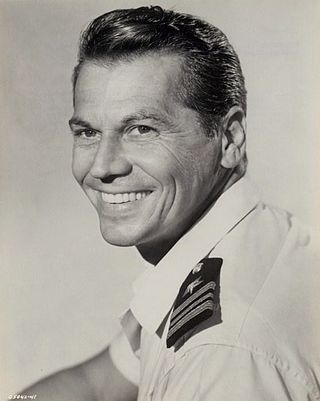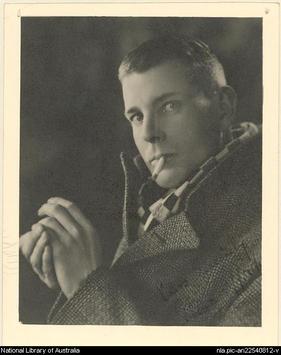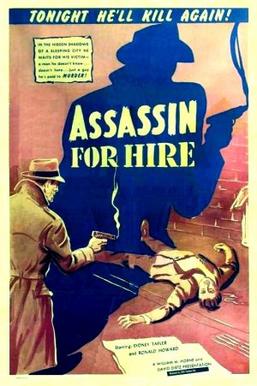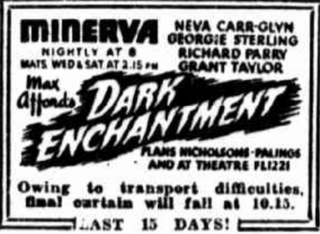
Frederick George Peter Ingle Finch was an English-Australian actor of theatre, film and radio.

John Joseph Cahill, also known as Joe Cahill or J. J. Cahill, was a long-serving New South Wales politician, railway worker, trade unionist and Labor Party Premier of New South Wales from 1952 to his death in 1959. Born the son of Irish migrants in Redfern, New South Wales, Cahill worked for the New South Wales Government Railways from the age of 16 before joining the Australian Labor Party. Being a prominent unionist organiser, including being dismissed for his role in the 1917 general strike, Cahill was eventually elected to the Parliament of New South Wales for St George in 1925.

Robert Guy Newton was an English actor. Along with Errol Flynn, Newton was one of the more popular actors among the male juvenile audience of the 1940s and early 1950s, especially with British boys. Known for his hard-living life, he was cited as a role model by the actor Oliver Reed and the Who's drummer Keith Moon.

Ronald Egan Randell was an Australian actor. After beginning his acting career on the stage in 1937, he played Charles Kingsford Smith in the film Smithy (1946). He also had roles in Bulldog Drummond at Bay (1947), Kiss Me Kate (1953), I Am a Camera (1955), Most Dangerous Man Alive (1961) and King of Kings (1961).

Dame Doratea Alice Lucy Walkden Fitton, was an Australian pioneering theatre entrepreneur, actress of stage and film and theatrical director and producer who established with 19 other actors The Independent Theatre Ltd. in North Sydney, New South Wales in 1930, which operated for forty-seven years.
Rusty Bugles was a controversial Australian play written by Sumner Locke Elliott in 1948. It toured extensively throughout Australia between 1948–1949 and was threatened with closure by the New South Wales Chief Secretary's Office for obscenity.

Malcolm R. Afford known as Max Afford, was an Australian playwright and novelist.
Independent Theatre, formerly known as The Independent Theatre Ltd., was an Australian dramatic society founded in 1930 by Dame Doris Fitton in Sydney, Australia. It is also the name given to the building it occupied from 1939, now owned by Wenona School, in North Sydney, cited as Sydney's oldest live theatre venue.

Assassin for Hire is a 1951 British crime film directed by Michael McCarthy and starring Sydney Tafler, Ronald Howard and Katharine Blake. Its plot follows a contract killer who becomes stricken with remorse when he is led to believe he has murdered his brother.
Lloyd Berrell was a New Zealand actor who played Reuben "Roo" Webber in the original Sydney production of Summer of the Seventeenth Doll. He worked extensively in Australian radio and theatre, appearing in a large portion of the films being shot locally at that time. He also starred in the original stage production of Sumner Locke Elliott's Rusty Bugles as well as numerous productions for the Mercury Theatre.

Alfred Gambier Newman was an Australian architect active in the first 20 years of the 20th century. He designed significant work for both the Methodist Church and the Newman and Vickery families.

Lady in Danger was a play by Australian writer Max Afford. It was one of the few Australian plays to be produced on Broadway. It was also adapted for radio and television.

The Invisible Circus is a 1946 Australian stage play by Sumner Locke Elliott set in the world of commercial radio drama, a field that Elliott knew well from many years writing for George Edwards. Elliott is represented in two characters, the idealistic Brad and the more jaded Mark.

"They Were Big, They Were Blue, They Were Beautiful" is an Australian television movie, or rather a live television play, which aired live on 27 June 1959 in Sydney, and on 8 August 1959 in Melbourne. It aired as part of Shell Presents, a monthly presentation of standalone productions which aired from 1959 to 1960 on ATN-7 in Sydney and GTV-9 in Melbourne.

Dark Enchantment is a 1949 Australian play by Max Afford.
"The Tape Recorder" is the second television play episode of the first season of the Australian anthology television series Australian Playhouse. "The Tape Recorder" was written by Pat Flower and directed by Henri Safran and originally aired on ABC on 25 April 1966.
"Johnny Belinda" was a 1959 Australian TV adaptation of the 1940 play by Elmer Harris which had been filmed in 1948. It was the first "live" one hour drama on commercial television in Australia.

May Hollinworth was an Australian theatre producer and director, former radio actress, and founder of the Metropolitan Theatre in Sydney. The daughter of a theatrical producer, she was introduced to the theatre at a young age. She graduated with a science degree, and worked in the chemistry department of the University of Sydney, before being appointed as director of the Sydney University Dramatic Society, a post she held from 1929 until 1943
J. C. Williamson's, formerly Williamson, Garner, & Musgrove and Williamson and Musgrove, was an Australian theatrical management company and theatre owner. With its beginnings in the theatrical productions of J. C. Williamson and his partners in the nineteenth and early twentieth century, the company J. C. Williamson Limited was established in 1910. Colloquially known as The Firm or JCW, the company dominated Australian commercial theatre in the twentieth century and at one time was described as the largest theatrical firm in the world. It closed under financial pressure in 1976.

The Royal Standard Theatre, often referred to as the Standard Theatre was a small playhouse in Sydney, Australia, situated at 223 Castlereagh Street, near the Bathurst Street corner between Bathurst and Liverpool streets, and next to the fire station. It was later known as the Little Theatre and The Playhouse, and was demolished in the early 1920s.














